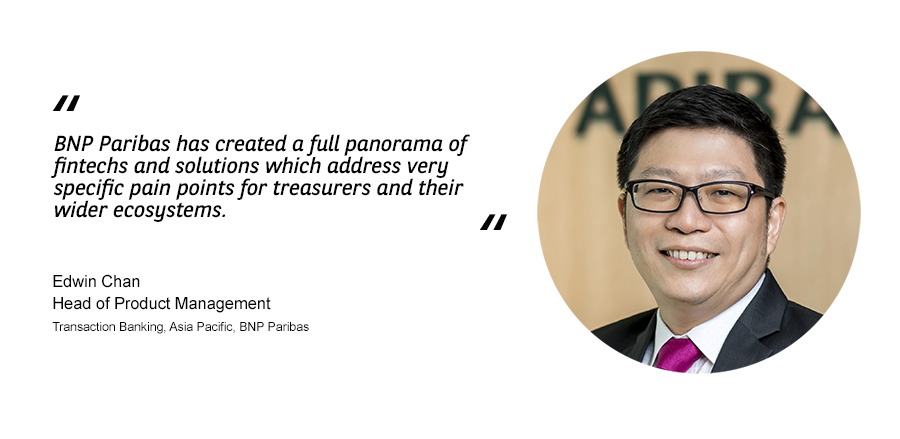For
today’s corporate treasurer, digitisation is no longer limited to optimising
treasury operations. With a growing number of companies integrating e-commerce
as a sales channel, treasurers are increasingly emerging as the go-to person
for guidance on which fintech and payment solutions providers can best help to
unlock new growth opportunities.
Treasurers who, not so long ago, played
catch up with other businesses and
divisions in digitisation are now sought after to advise on ways to
optimise financial outcomes of e-commerce and other digitisation initiatives.
The treasurer’s expanded domain knowledge
This isn’t surprising given that treasurers have invested considerable time and effort in scouring the market for technologies and fintech partners to automate treasury operations, process real-time payments and transactions, enhance risk management and cash forecasting, and even undertake complex transformation projects to consolidate data under Enterprise Resource Planning (ERP) systems.This has created considerable domain knowledge within treasury departments that companies are tapping as enterprise-wide digitisation and e-commerce adoption creates the need to synchronise the new technologies with corporate ERPs and Treasury Management Systems (TMS).

Nowhere is this more obvious than in China
Alternative payment and collections channels are extremely popular in China and that in many cases determines the success of a company’s distribution of their products and/or services. However, there is also a myriad of payment solution providers (PSPs) that are providing ancillary services such as payment settlement reconciliation, cross border wallet fund settlement, or invoice financing via e-commerce receivables.As a result, various parts of a business may have different views on their e-commerce collections and reconciliation strategy. Treasurers can act as a nexus to arbitrate and synchronize internal discussions and agreements to negotiate for better rates and services on behalf of the entire business.
A nexus for digital transformation
Elsewhere in Asia Pacific (APAC), local, as well as regional and even global, business units of multinational companies have started engaging directly with fintech vendors in recent years to enable faster payments and collections. These fintechs range from global players to local solution providers who, for example, can facilitate collections from distributors spread across the Indonesian archipelago and pay growers and suppliers in rural Thailand or Vietnam. Each fintech provider may have different settlement cycles and reporting formats, which will eventually present reconciliation and cash-forecasting challenges for treasurers.
Concerned Stakeholder Turned Internal Consultant
Treasurers are increasingly being tasked with creating a structured framework for harmonising technologies and solutions that have a bearing on cash and working capital. Here the treasury department’s role falls into three main categories—a key stakeholder approving fintech deployment, a centre of excellence for implementing digital solutions, or simply an internal consultant.As a concerned stakeholder, the treasurer is more than an internal consultant and has a say in the selection of fintech partners and PSPs. By assessing and approving vendors from a trustworthiness and compatibility perspective, treasurers can ward off potential problems for the company.
At the other end of the spectrum, some treasury departments are taking on a proactive role and becoming centres of digitisation excellence, where a Digital Treasury Manager is responsible not just with treasury digitisation, but a digitisation solution for the entire ecosystem. At one such company, the treasury has even prepared a list of vendors for business units to pick from for making payments to, or collecting from, suppliers and retailers. The underlying logic being that what works for the business unit will also work for the treasury.
Other experimental approaches include an agribusiness firm where the treasury department is forecasting liquidity, among other things, using harvest and crop forecasts provided by IoT sensors embedded in the company’s plantations.
Keeping Up With the Latest Technology
While treasurers have developed significant domain knowledge about treasury digitisation, fintech and digital payments, they aren’t technology experts and are often too time-constrained to keep abreast of the latest tools and solutions. This is where banks can come in, both as advisers and co-creators of safe and reliable digital solutions.In recent months, BNP Paribas worked with a fintech firm and a corporate client to develop a mobile phone application to facilitate faster collection and reconciliation of cheques from remote locations. After studying the challenges, the bank defined the problem statement and in little over a week had the fintech build a working prototype that reduced the collection and reconciliation process from two weeks to almost real time.
“We also co-created a digital treasury solution to enable a company selling consumer products on multiple online channels to streamline reports coming in varying formats and frequencies from payment partners and banks,” explains Kok Wai. This digital ecosystem enables the company to synchronise not just payment reports, but also settlement cycles regardless of who they collect payments from.

There are multiple other examples where BNP Paribas has embarked on a quest alongside clients in order to find the solution best suited for their needs. “Through this global journey, BNP Paribas has created a full panorama of fintechs and solutions which address very specific pain points for treasurers and their wider ecosystems,” says Edwin Chan, Head of Product Management, Transaction Banking APAC, BNP Paribas.
Business digitisation solutions that impact treasury processes include:
|
